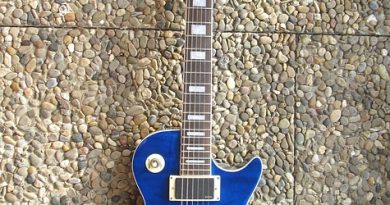Mastering Chord Inversions: Essential Guitar Tips
Mastering Chord Inversions: Essential Guitar Tips
As a guitarist, mastering chord inversions is an essential skill that can take your playing to the next level. Chord inversions are simply different ways of playing a chord by changing the order of the notes. By learning and practicing chord inversions, you can create more interesting and complex sounds in your playing. In this article, we will cover some essential guitar tips for mastering chord inversions.
Understanding Chord Inversions
To understand chord inversions, it is important to first understand the structure of a chord. A basic chord consists of three notes: the root, the third, and the fifth. For example, a C major chord consists of the notes C, E, and G. When you play a chord in its root position, the root note is the lowest note in the chord. However, by rearranging the order of the notes, you can create different chord inversions.
Types of Chord Inversions
There are three main types of chord inversions: root position, first inversion, and second inversion. In root position, the root note is the lowest note in the chord. In first inversion, the third of the chord is the lowest note. In second inversion, the fifth of the chord is the lowest note. By mastering these different inversions, you can create a more varied and interesting sound in your playing.
Benefits of Learning Chord Inversions
There are several benefits to learning and mastering chord inversions. Firstly, chord inversions can add depth and complexity to your playing by allowing you to create more interesting voicings and harmonic textures. Secondly, chord inversions can help you to create smoother voice leading between chords, making your transitions between chords more seamless and musical. Finally, mastering chord inversions can improve your overall understanding of music theory and make you a more versatile and skilled guitarist.
Essential Guitar Tips for Mastering Chord Inversions
Now that you understand the importance of chord inversions, here are some essential guitar tips to help you master them:
1. Start with basic open chords: Begin by practicing chord inversions with basic open chords such as C, G, D, and A. Experiment with different fingerings and positions on the fretboard to create different inversions of these chords.
2. Learn the shapes: Memorize the shapes of different chord inversions on the guitar neck. This will make it easier for you to quickly find and play different inversions during a song.
3. Practice transitioning between inversions: Work on smoothly transitioning between different chord inversions within a song. This will help you to improve your overall playing and make your chord progressions sound more musical.
4. Experiment with different voicings: Try experimenting with different voicings and combinations of notes within a chord inversion. This will allow you to create unique and interesting sounds in your playing.
5. Use a metronome: Practice playing chord inversions with a metronome to improve your timing and accuracy. Start slow and gradually increase the tempo as you become more comfortable with the inversions.
6. Apply chord inversions to songs: Once you feel comfortable with chord inversions, try applying them to songs you are learning or writing. This will help you to incorporate inversions into your playing and make your music sound more advanced.
Conclusion
Mastering chord inversions is an essential skill for any guitarist looking to improve their playing and musicality. By understanding the different types of chord inversions, practicing regularly, and applying them to songs, you can create more interesting and dynamic sounds on the guitar. Experiment with different voicings, transitions, and combinations of notes to unlock the full potential of chord inversions in your playing. With dedication and practice, you can become a master of chord inversions and take your guitar playing to the next level.






